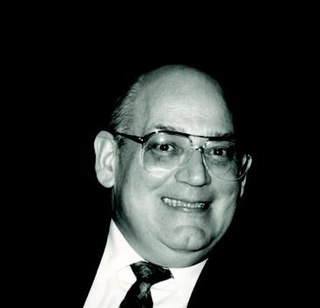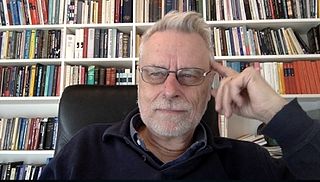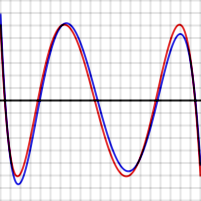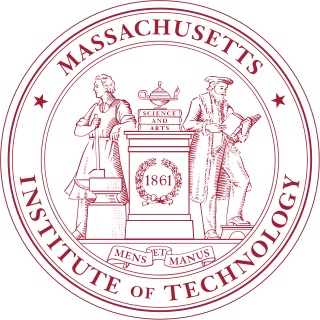
Rudolf Emil Kálmán was a Hungarian-born American electrical engineer, mathematician, and inventor. He was most noted for his co-invention and development of the Kalman filter, a mathematical algorithm that is widely used in signal processing, control systems, and guidance, navigation and control. For this work, U.S. President Barack Obama awarded Kálmán the National Medal of Science on October 7, 2009.

Alberto Pedro Calderón was an Argentinian mathematician. His name is associated with the University of Buenos Aires, but first and foremost with the University of Chicago, where Calderón and his mentor, the analyst Antoni Zygmund, developed the theory of singular integral operators. This created the "Chicago School of (hard) Analysis". Calderón's work ranged over a wide variety of topics: from singular integral operators to partial differential equations, from interpolation theory to Cauchy integrals on Lipschitz curves, from ergodic theory to inverse problems in electrical prospection. Calderón's work has also had a powerful impact on practical applications including signal processing, geophysics, and tomography.

Calyampudi Radhakrishna Rao, FRS known as C R Rao is an Indian-American mathematician and statistician. He is currently professor emeritus at Pennsylvania State University and Research Professor at the University at Buffalo. Rao has been honoured by numerous colloquia, honorary degrees, and festschrifts and was awarded the US National Medal of Science in 2002. The American Statistical Association has described him as "a living legend whose work has influenced not just statistics, but has had far reaching implications for fields as varied as economics, genetics, anthropology, geology, national planning, demography, biometry, and medicine." The Times of India listed Rao as one of the top 10 Indian scientists of all time. Rao is also a Senior Policy and Statistics advisor for the Indian Heart Association non-profit focused on raising South Asian cardiovascular disease awareness.

Solomon Wolf Golomb was an American mathematician, engineer, and professor of electrical engineering at the University of Southern California, best known for his works on mathematical games. Most notably, he invented Cheskers in 1948 and coined the name. He also fully described polyominoes and pentominoes in 1953. He specialized in problems of combinatorial analysis, number theory, coding theory, and communications. His game of pentomino inspired Tetris.

Thomas Kailath is an electrical engineer, information theorist, control engineer, entrepreneur and the Hitachi America Professor of Engineering, Emeritus, at Stanford University. Professor Kailath has authored several books, including the well-known book Linear Systems, which ranks as one of the most referenced books in the field of linear systems. In 2012, Kailath was awarded the National Medal of Science, presented by President Barack Obama in 2014 for "transformative contributions to the fields of information and system science, for distinctive and sustained mentoring of young scholars, and for translation of scientific ideas into entrepreneurial ventures that have had a significant impact on industry." Kailath is listed as an ISI highly cited researcher and is generally recognized as one of the preeminent figures of twentieth-century electrical engineering.

Eduardo Daniel Sontag is an American mathematician, and Distinguished University Professor at Northeastern University, who works in the fields control theory, dynamical systems, systems molecular biology, cancer and immunology, theoretical computer science, neural networks, and computational biology.

Norman Manuel Abramson is an American Jewish engineer and computer scientist, most known for developing the ALOHAnet system for wireless computer communication.
Ernst Adolph Guillemin was an American electrical engineer and computer scientist at the Massachusetts Institute of Technology who spent his career extending the art and science of linear network analysis and synthesis.

William Littell Everitt was a noted American electrical engineer, educator, and founding member of the National Academy of Engineering. He received his Ph.D. from The Ohio State University in 1933. He was adviser of numerous outstanding scientists at OSU including Karl Spangenberg, and Nelson Wax. His PhD adviser was Frederic Columbus Blake.

Pramod P. Khargonekar is the Vice Chancellor for Research and Distinguished Professor of Electrical Engineering and Computer Science at the University of California, Irvine. An expert in control systems engineering, Dr. Khargonekar has served in a variety of administrative roles in academia and federal funding agencies. Most recently, he served as Assistant Director for Engineering at the National Science Foundation (2013-2016), and as Deputy Director for Technology at the Advanced Research Projects Agency – Energy. From 2001 through 2009 he was the Dean of the College of Engineering at the University of Florida.
Daoxing Xia is a Chinese American mathematician. He is currently a professor at the Department of Mathematics, Vanderbilt University in the United States. He was elected an academician of the Chinese Academy of Science in 1980.

Richard Steven Varga is an American mathematician who specializes in numerical analysis and linear algebra. He is currently an Emeritus University Professor of Mathematical Sciences at Kent State University and an adjunct Professor at Case Western Reserve University. Varga is known for his contributions to many areas of mathematics, including matrix analysis, complex analysis, approximation theory, and scientific computation. He is the author of the classic textbook Matrix Iterative Analysis. Varga has been the Editor-in-Chief of the journal Electronic Transactions on Numerical Analysis (ETNA).
Gregory Anthony Kriegsmann (1946–2018) was Distinguished Professor of Mathematics and Foundation Chair at New Jersey Institute of Technology’s department of Mathematical Sciences.

Robert Ralph Phelps was an American mathematician who was known for his contributions to analysis, particularly to functional analysis and measure theory. He was a professor of mathematics at the University of Washington from 1962 until his death.

Anders Gunnar Lindquist is a Swedish applied mathematician and control theorist. He has made contributions to the theory of partial realization, stochastic modeling, estimation and control, and moment problems in systems and control. In particular, he is known for the discovery of the fast filtering algorithms for (discrete-time) Kalman filtering in the early 1970s, and his seminal work on the Separation Principle of Stochastic Optimal Control and, in collaborations with Giorgio Picci, the Geometric Theory for Stochastic Realization. Together with late Christopher I. Byrnes and Tryphon T. Georgiou, he is one of the founder of the so-called Byrnes-Georgiou-Lindquist school. They pioneered a new moment-based approach for the solution of control and estimation problems with complexity constraints.

Harold Vincent Poor, FRS FREng is the former Dean of Engineering and a professor at Princeton University, USA. He is a specialist in wireless telecommunications, signal processing and information theory. He has received many honorary degrees and election to national academies. He was also President of IEEE Information Theory Society (1990). He is on the Board of Directors of the IEEE Foundation.
Sanjeev Ramesh Kulkarni is an Indian-born American academic. He is Professor of Electrical Engineering and Dean of the Faculty at Princeton University, where he teaches and conducts research in a broad range of areas including statistical inference, pattern recognition, machine learning, information theory, and signal/image processing. He is also affiliated with the Department of Operations Research and Financial Engineering and the Department of Philosophy. His work in philosophy is joint with Gilbert Harman. Kulkarni served as Associate Dean for Princeton University School of Engineering and Applied Science from 2003–2005, Master of Butler College from 2004-2012, Director of the Keller Center for Innovation in Engineering Education from 2011-2014, and Dean of the Graduate School at Princeton University from 2014-2017.
Robert W. Ghrist is an American mathematician, known for his work on topological methods in applied mathematics.
Mischa Schwartz is professor emeritus of electrical engineering at Columbia University, which he joined in 1974 as professor of electrical engineering and computer science. He received the B.E.E. degree from the Cooper Union, New York, NY, in 1947, the M.E.E. degree from the Polytechnic Institute in 1949, and the Ph.D. degree in applied physics from Harvard University under the supervision of Philippe Le Corbeiller in 1951. He was the founding director of the NSF-sponsored Center for Telecommunications Research (CTR). He is a Life Fellow of the IEEE, a member of the US National Academy of Engineering, and a Fellow of the AAAS. He is also a past president of the IEEE Communications Society, and a former Director of the IEEE.
Akram Aldroubi is an American mathematician known for his work in sampling theory, harmonic analysis, and their applications to signal and image processing as well as biomedical data analysis.

















